We develop recycling technology for composites
Reinforced polyester and epoxy items typically contains 50 - 60 % of glass fibres. If such materials are burned in ordinary waste incineration ovens - the glass material will end up in the general slag fraction. Slag from household wastes typically contain heavy metals and must be deposited of in secured areas to avoid further pollution of the environment. When worn out Wind Turbine Blades are sent to municipal incineration facilities, the glass fibre material get mixed up with the polluted slag from household waste incineration. This is avoided by using the ReFiber process.

In the ReFiber process - the plastic part is gasified at ca. 500 °C (932 F) in an anaerobic atmosphere in a rotary kiln. The metals, fillers and glass fibres are recovered and separated.
Before the gasification, the size of the glass fibre items are reduced to maximum 10 by 10 inches.
After dust cleaning - the Glass fibres are cut to their final length, and sorted for their final use:
As insulation material or short fibre reinforcement for new plastic products or filler pastes.
After heating to 500 °C the fibres have lost more than 50 % of their initial strength, whereas
the stiffness of the fibres - Modulus of elasticity - is practically unaffected by the thermal treatment.
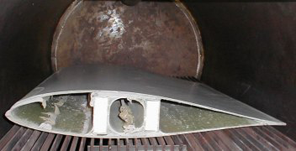 Wind Turbine Blade part before pyrolysis |
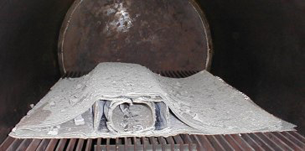 Wind Turbine Blade part after pyrolysis Wind Turbine Blade part after pyrolysis |
Separated metal, filler, roving, fabric and CSM | Insulation Wool Mat made from blade fibres |
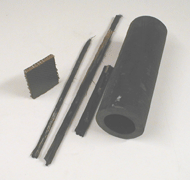
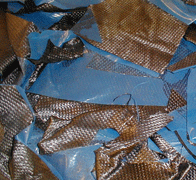
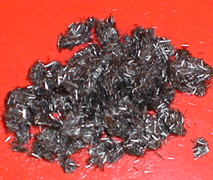
End use Carbon Waste
PrePreg Production Waste
Carbon short Fibre Product
![]()